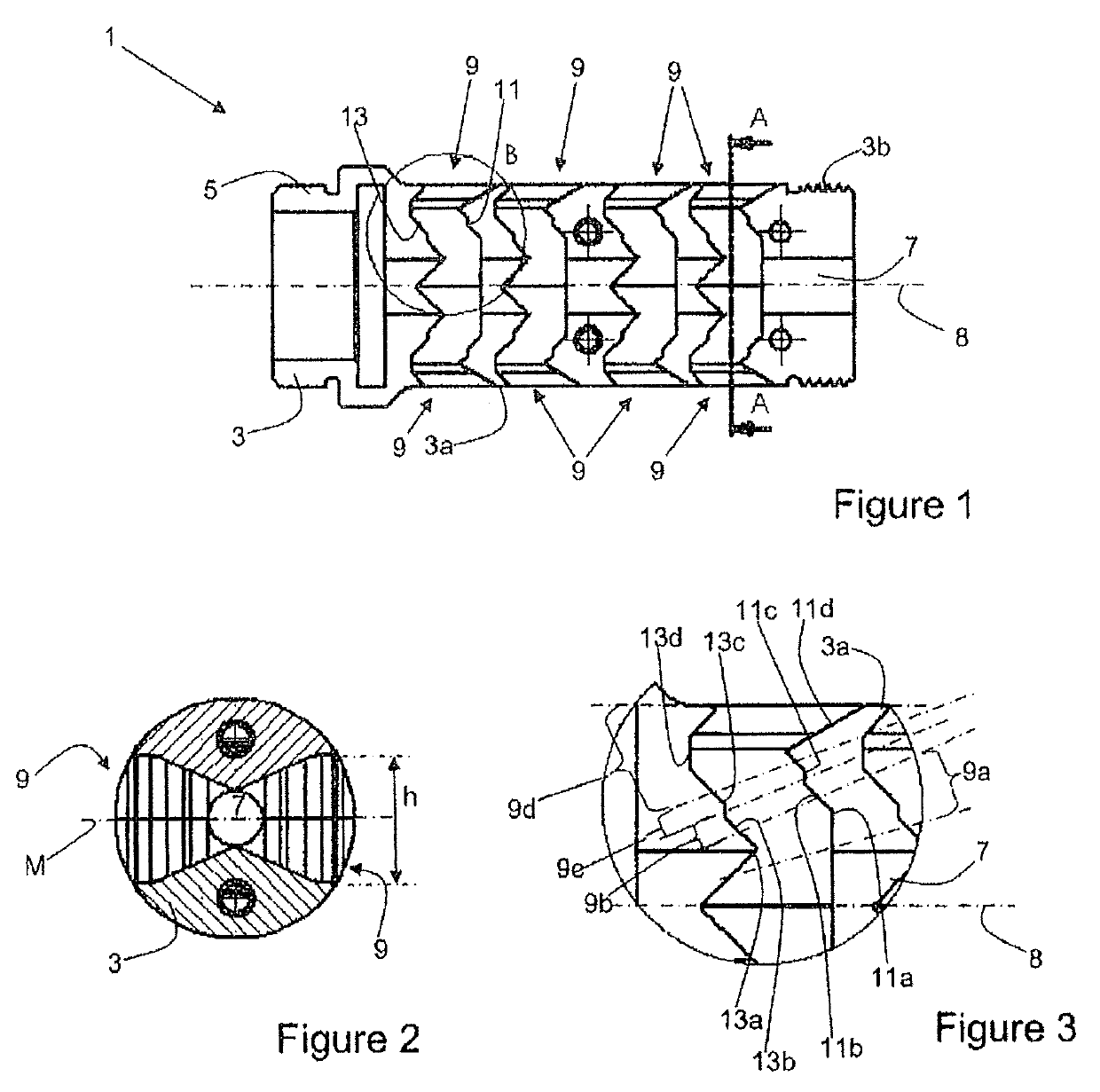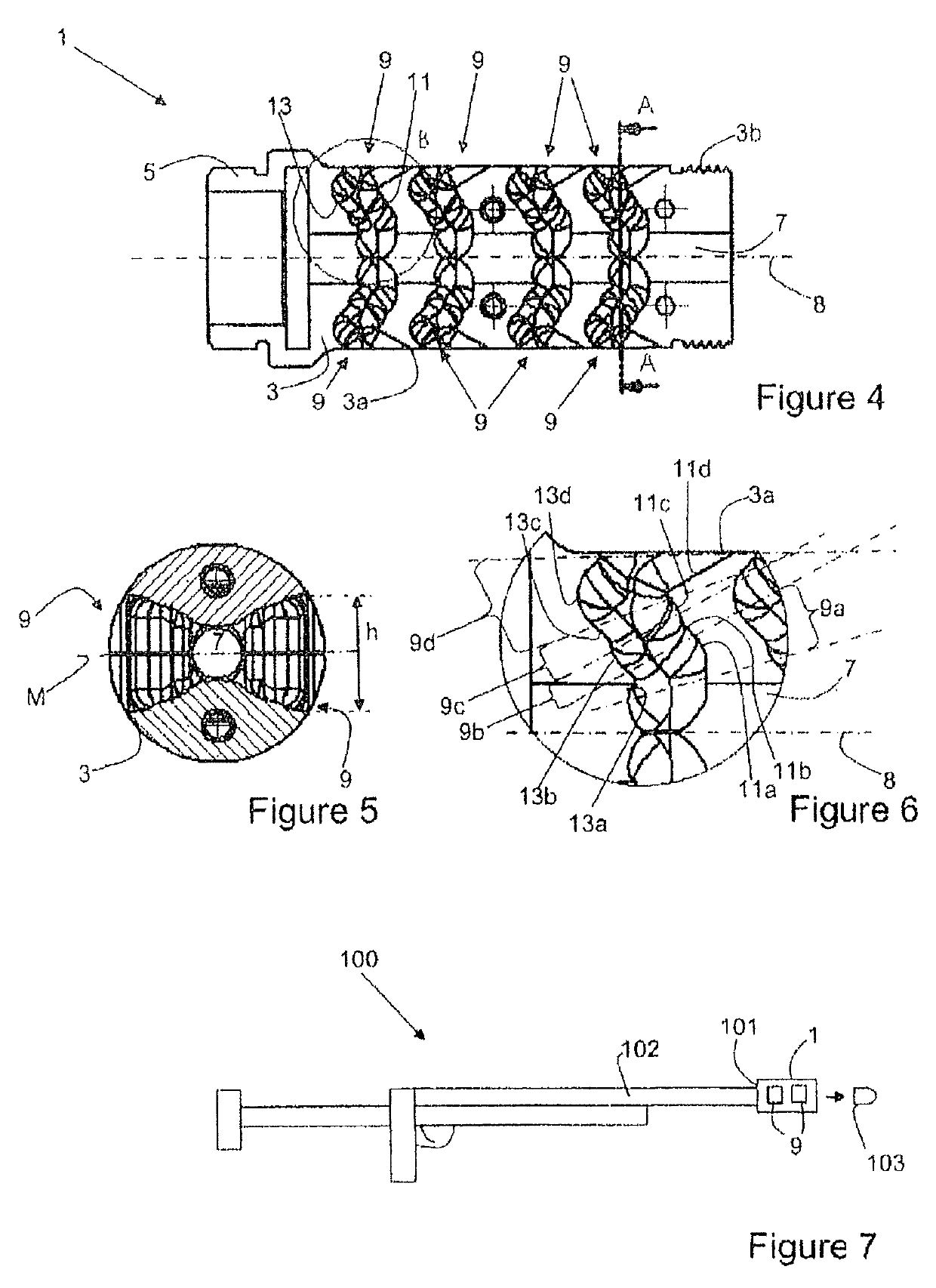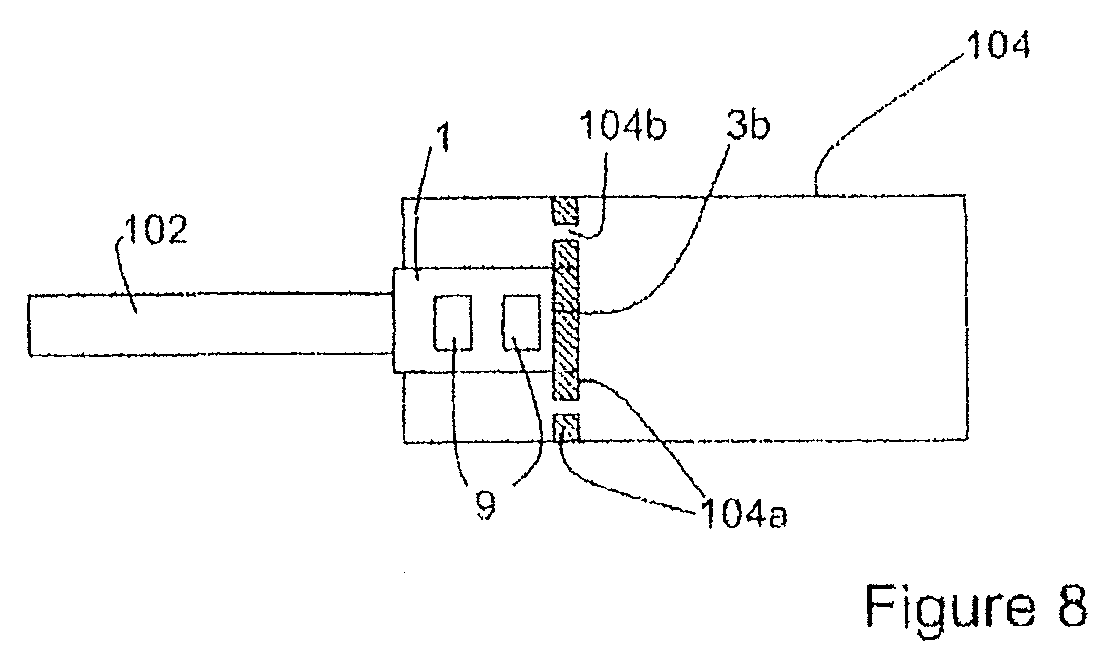Muzzle device for a projectile-firing device
a projectile-firing device and muzzle device technology, applied in the direction of muzzle attachment, etc., can solve the problems of increased noise, ineffective tronconical baffles, and inability to extract as much work from expanding gases, so as to reduce the propagation of shock waves, reduce the noise of users, and reduce the effect of muzzle flash
- Summary
- Abstract
- Description
- Claims
- Application Information
AI Technical Summary
Benefits of technology
Problems solved by technology
Method used
Image
Examples
Embodiment Construction
[0042]FIGS. 1-3 and 4-6 illustrate respectively a first and a second embodiment of a muzzle device 1 according to the invention, the difference between the two variants being that the form of the passageway is highly angular in the first embodiment, and more rounded in the second embodiment for ease of machining. Indeed, FIG. 1-3 show the basic geometric form which rounded to form that of FIGS. 4-6. FIG. 7 illustrates schematically the muzzle device 1 attached to a projectile-firing device 100 such as a rifle, and FIG. 8 shows it combined with a sound moderator.
[0043]Muzzle device 1 comprises, as is generally known, a body 3 of typically cylindrical or prismatic form. At a proximal end 5, the body 3 is adapted to be mounted on the muzzle 101 of a barrel 102 of a projectile-firing device 100 such as a rifle, shotgun, artillery piece, airgun, handgun, cannon or similar, either directly by threading or pinning, or indirectly by means of an appropriate adaptor. It may also be integrally...
PUM
 Login to View More
Login to View More Abstract
Description
Claims
Application Information
 Login to View More
Login to View More - R&D
- Intellectual Property
- Life Sciences
- Materials
- Tech Scout
- Unparalleled Data Quality
- Higher Quality Content
- 60% Fewer Hallucinations
Browse by: Latest US Patents, China's latest patents, Technical Efficacy Thesaurus, Application Domain, Technology Topic, Popular Technical Reports.
© 2025 PatSnap. All rights reserved.Legal|Privacy policy|Modern Slavery Act Transparency Statement|Sitemap|About US| Contact US: help@patsnap.com



